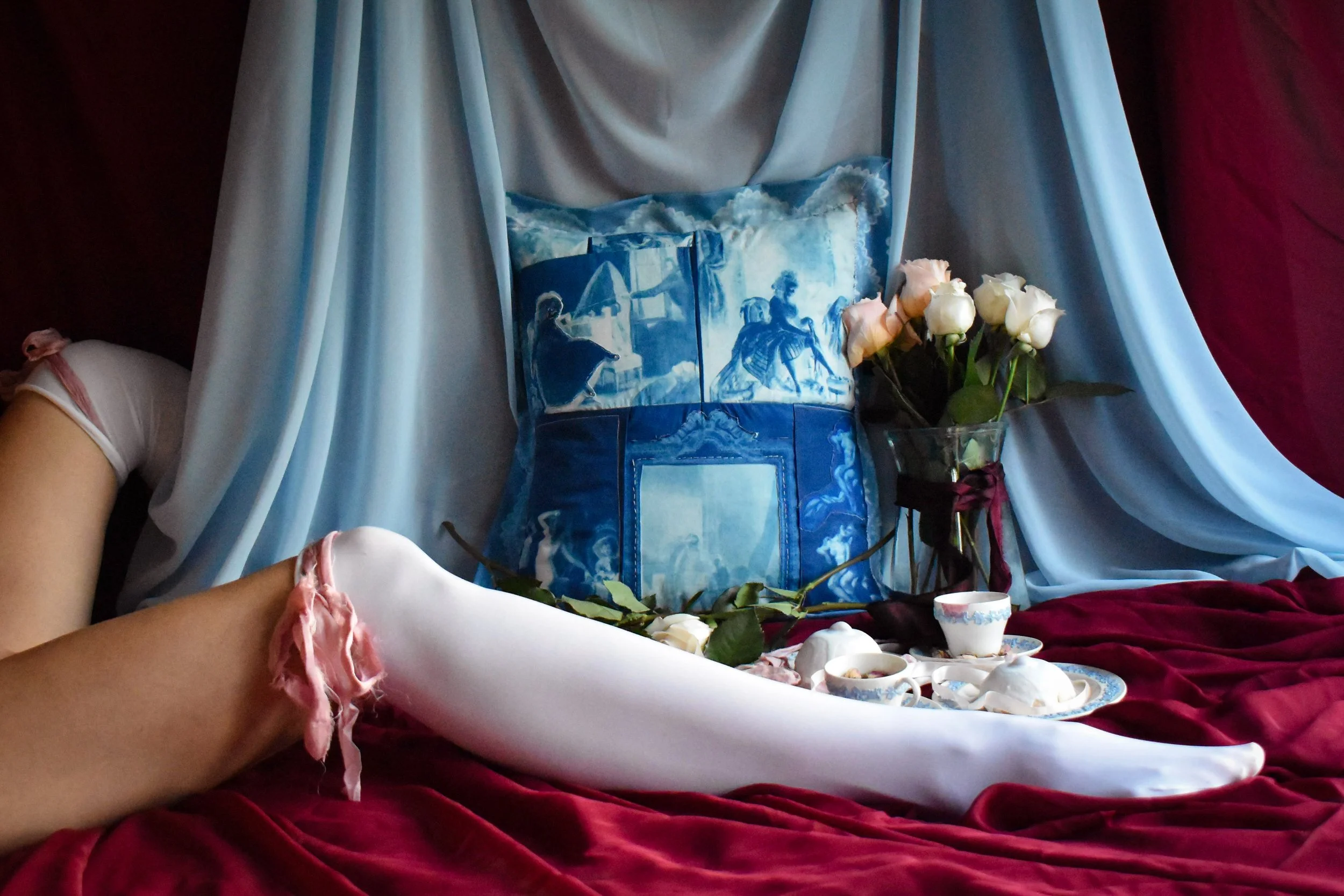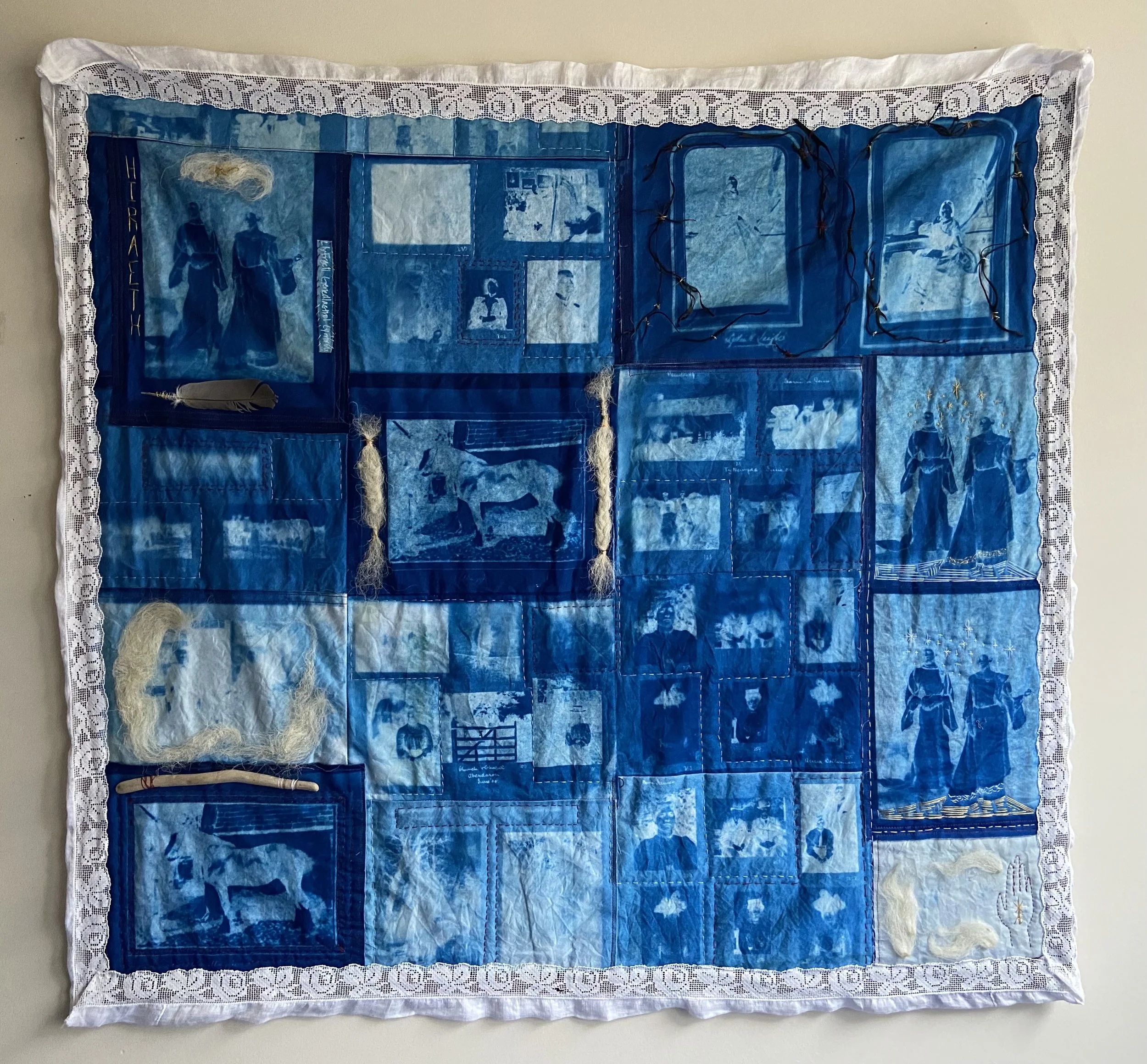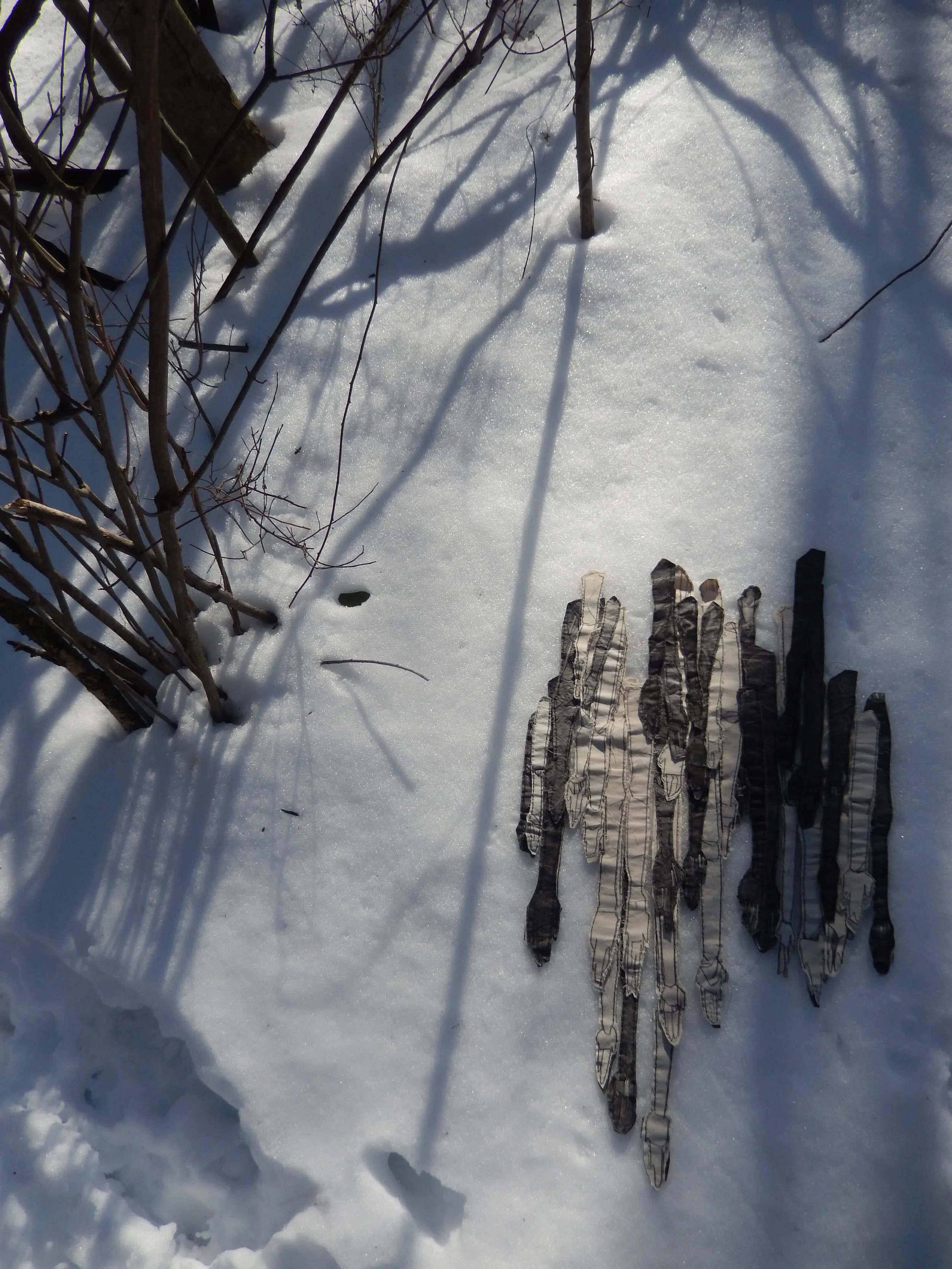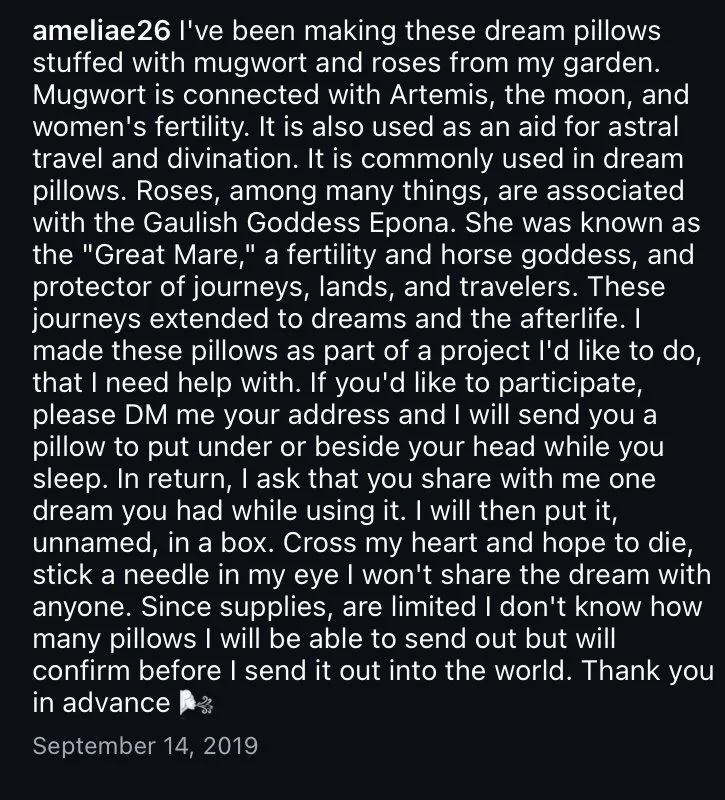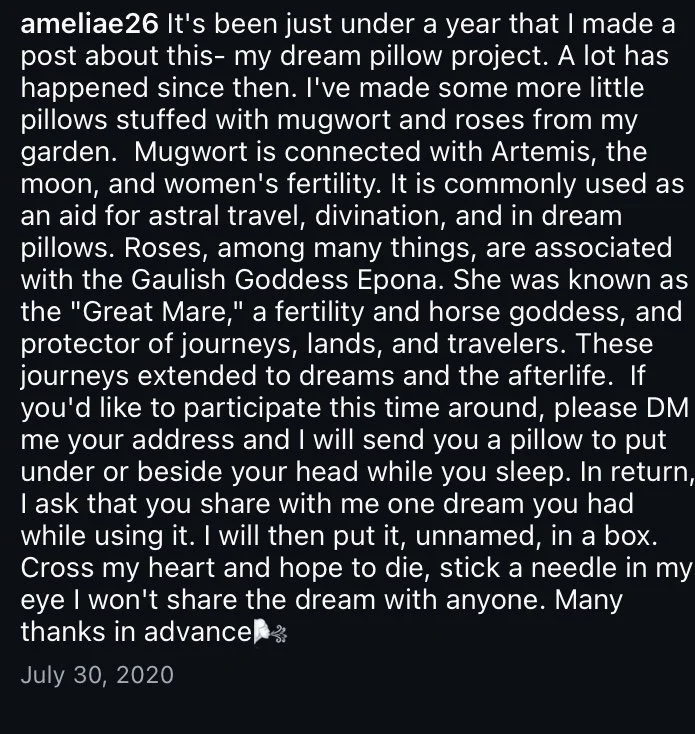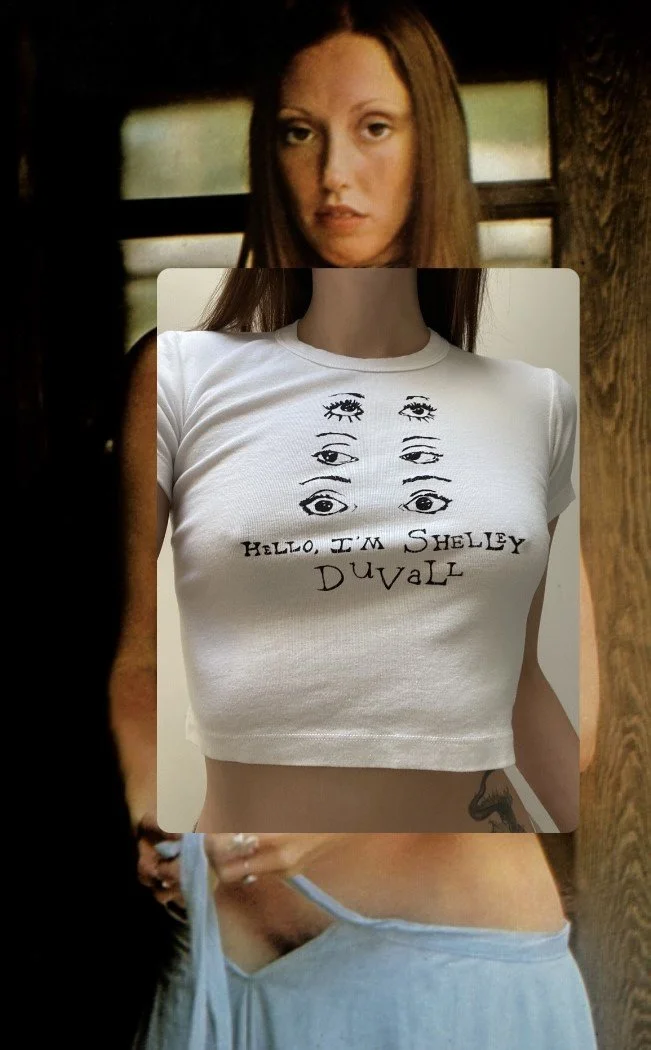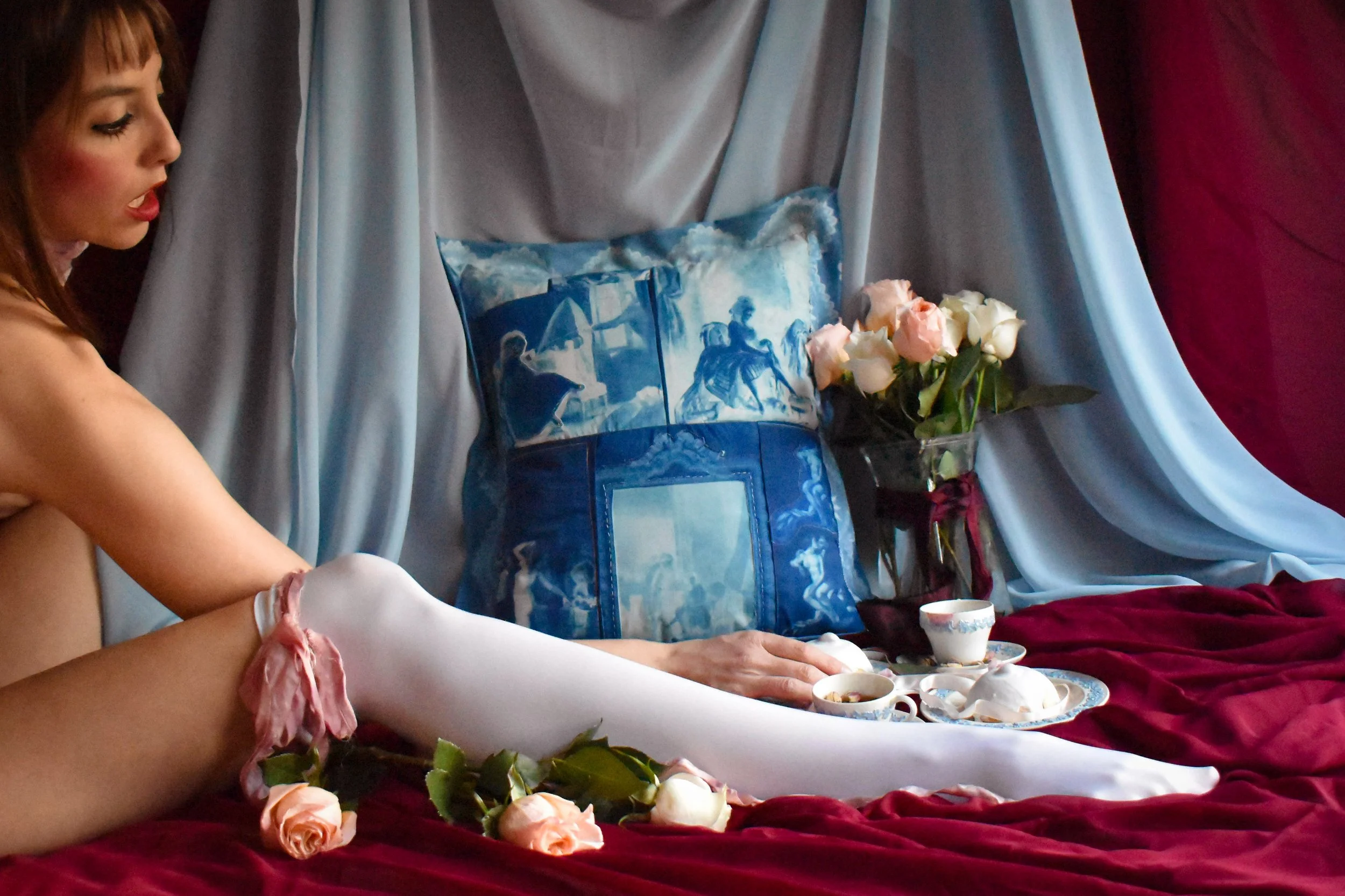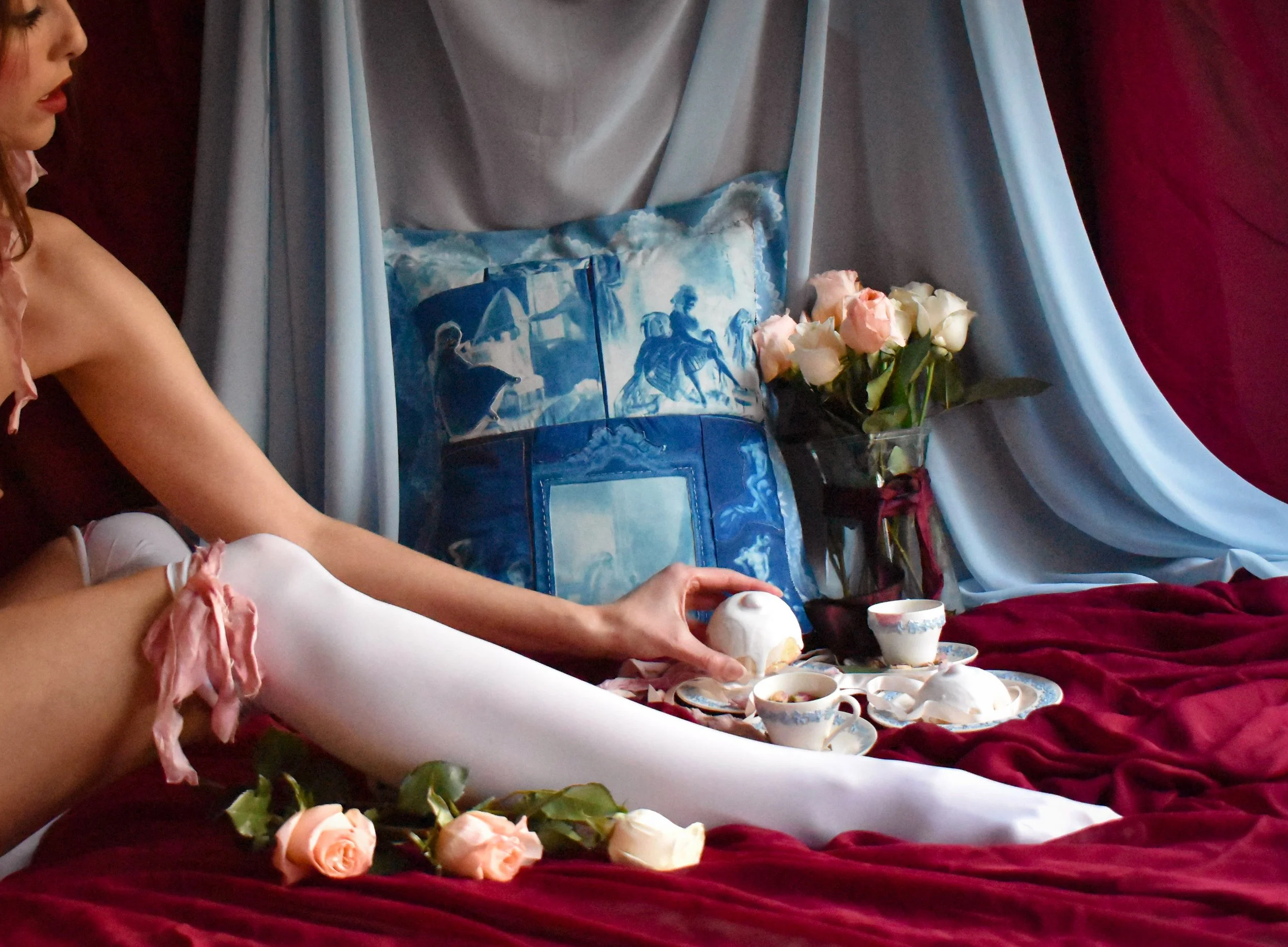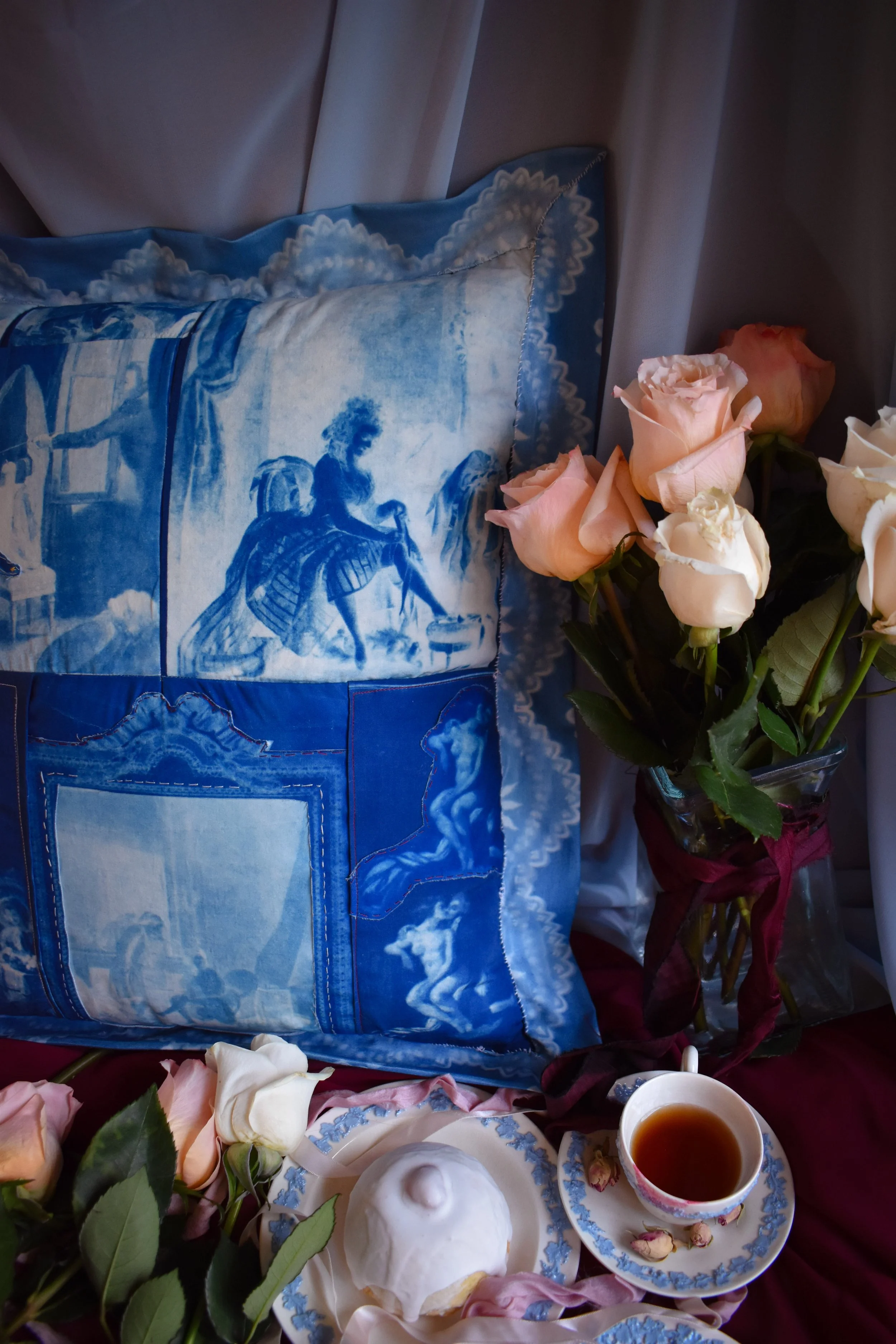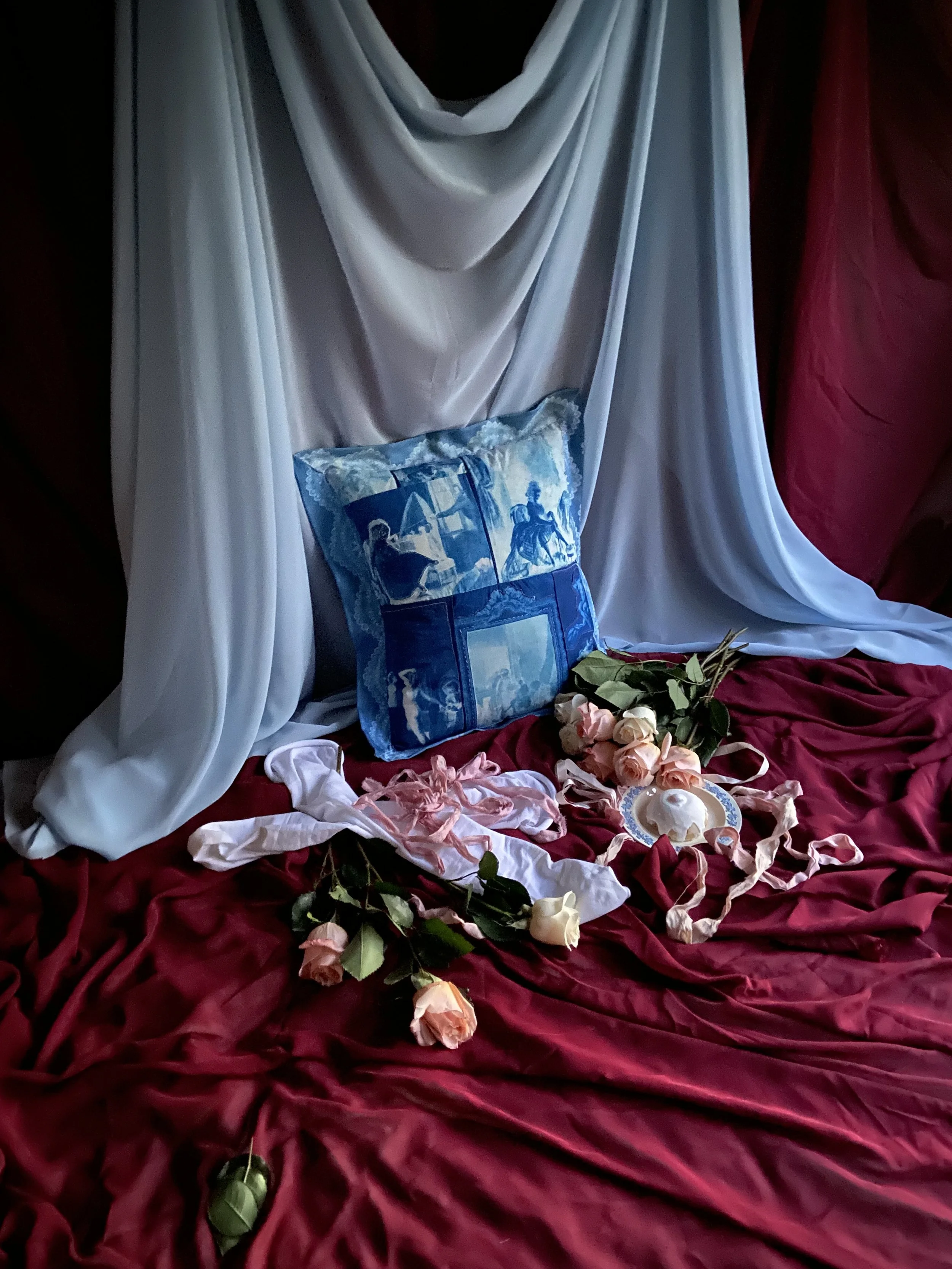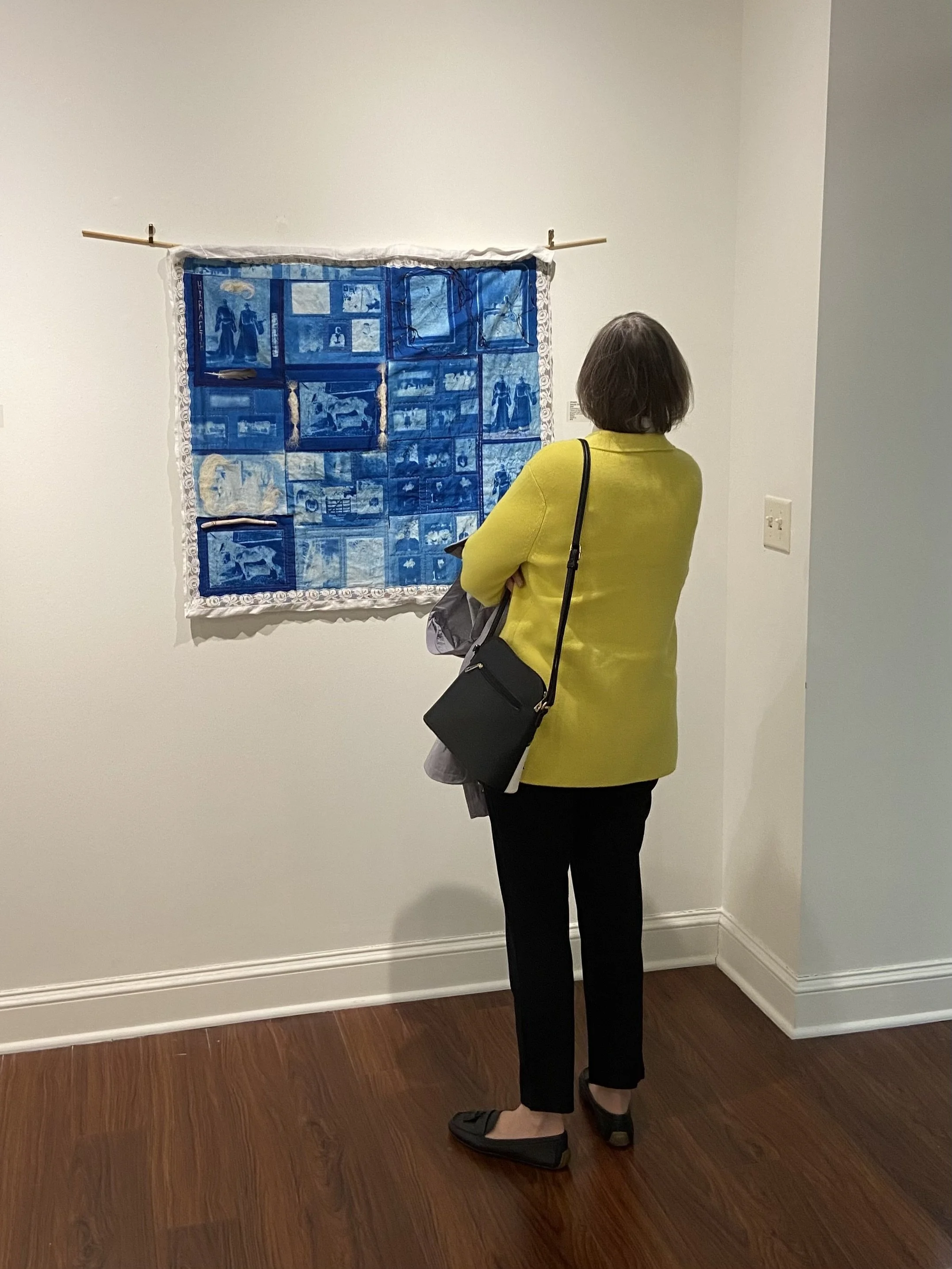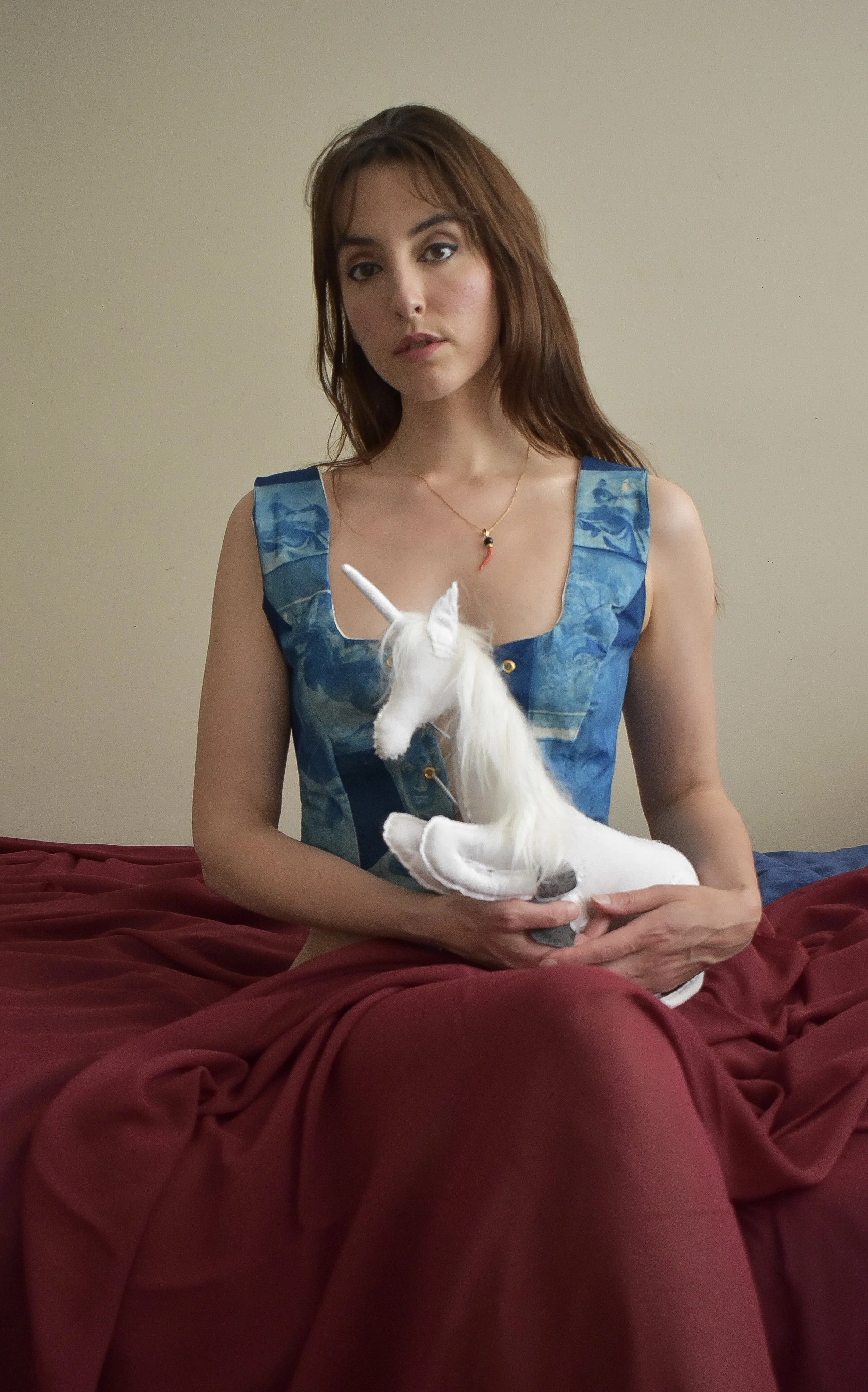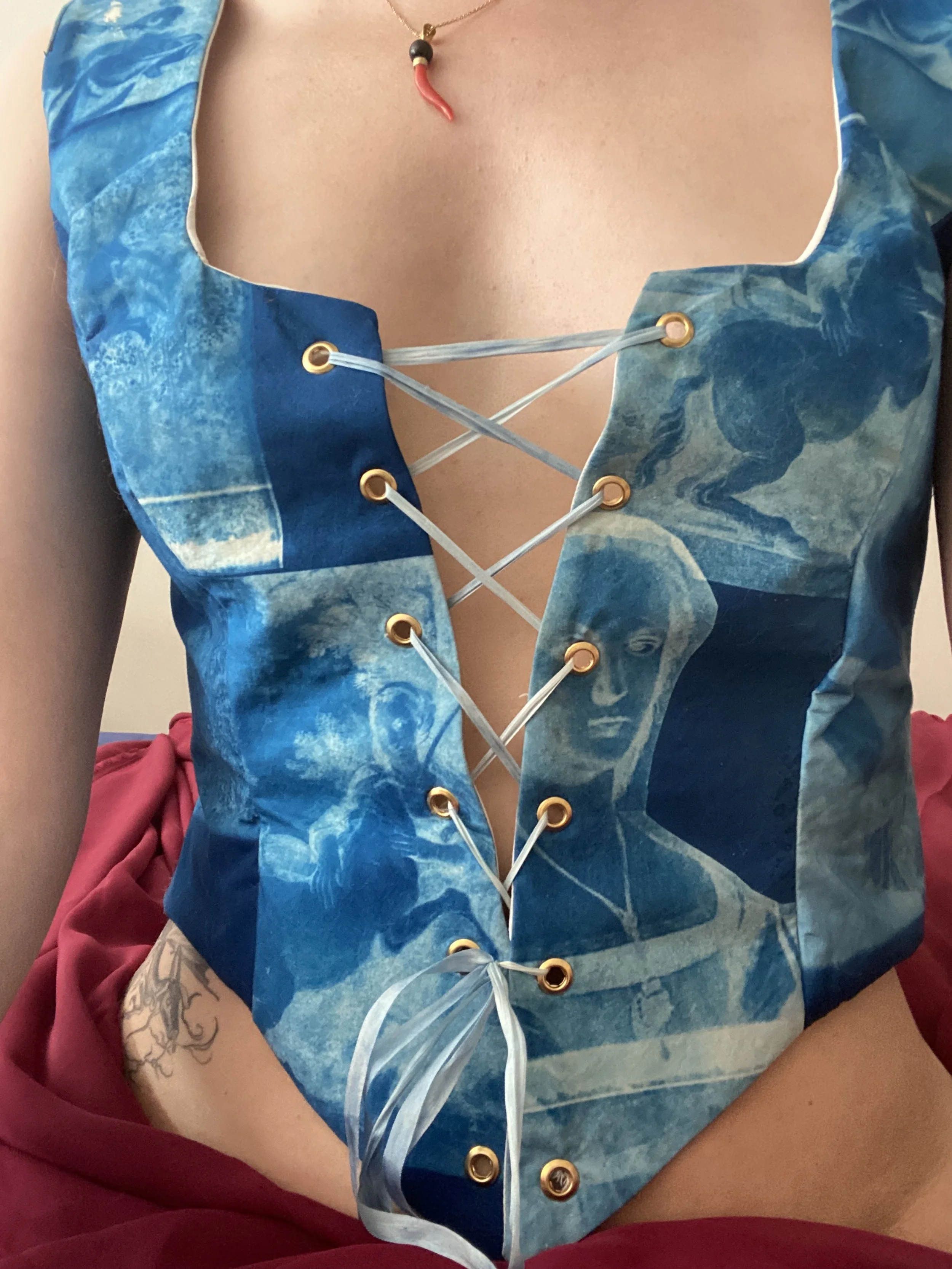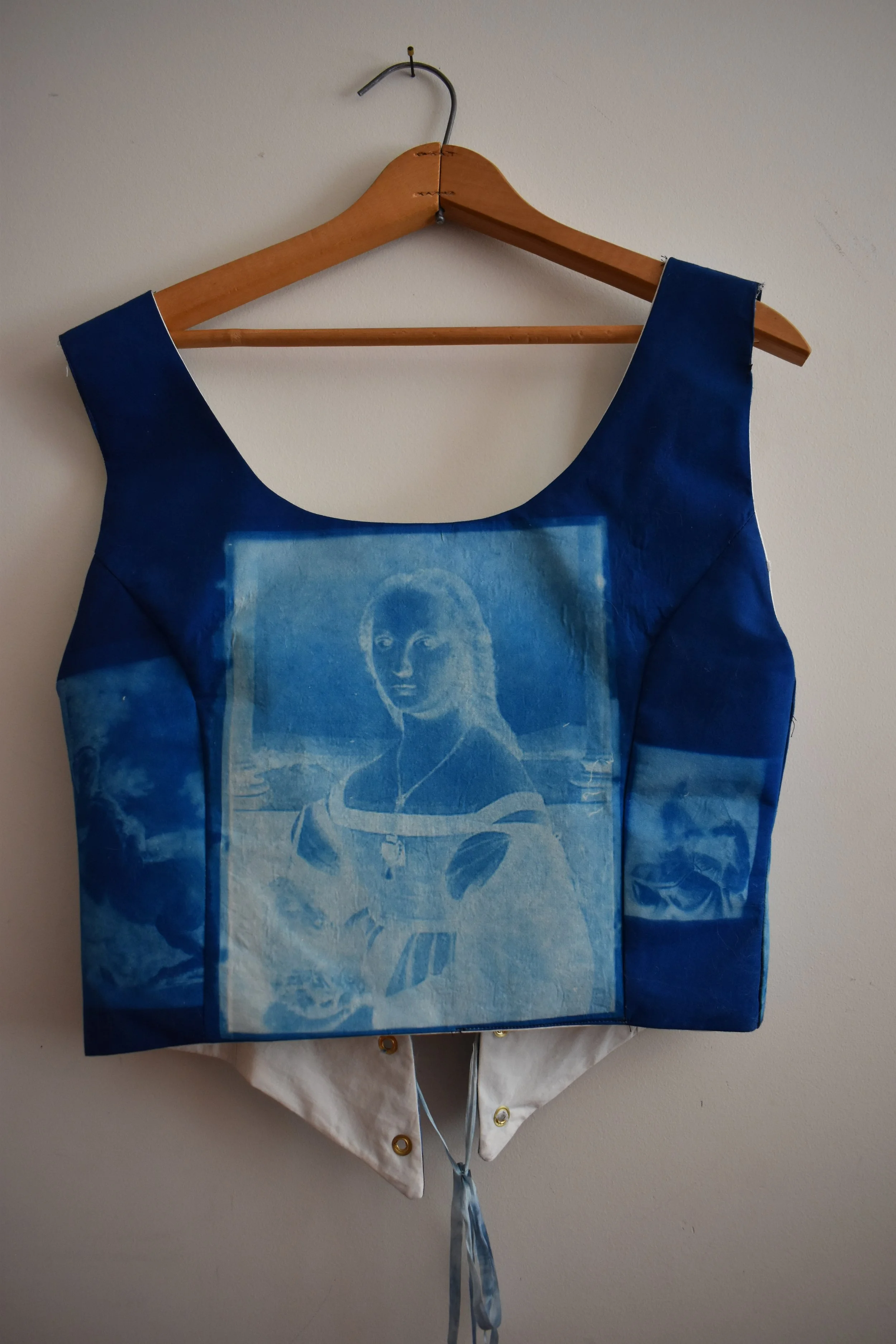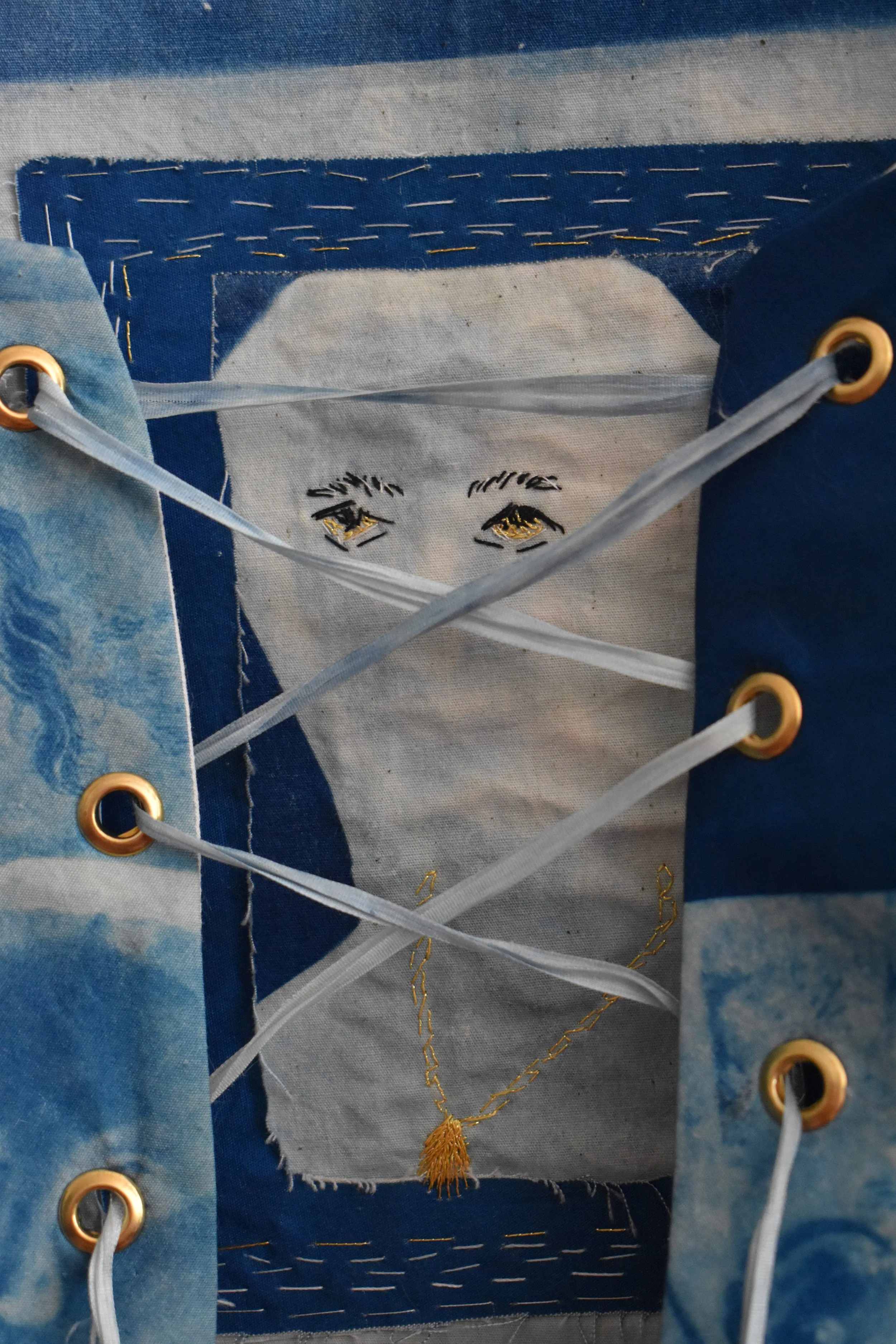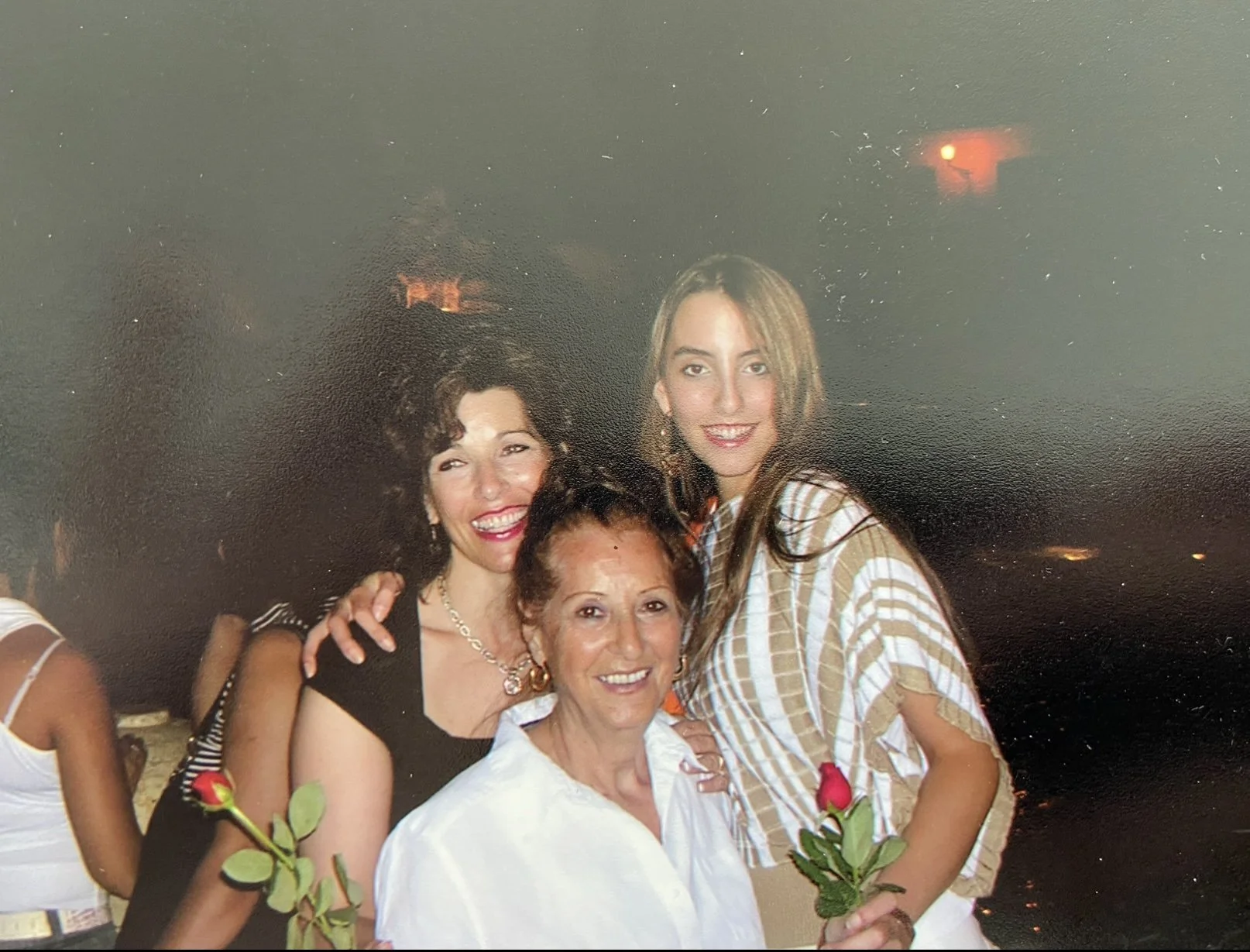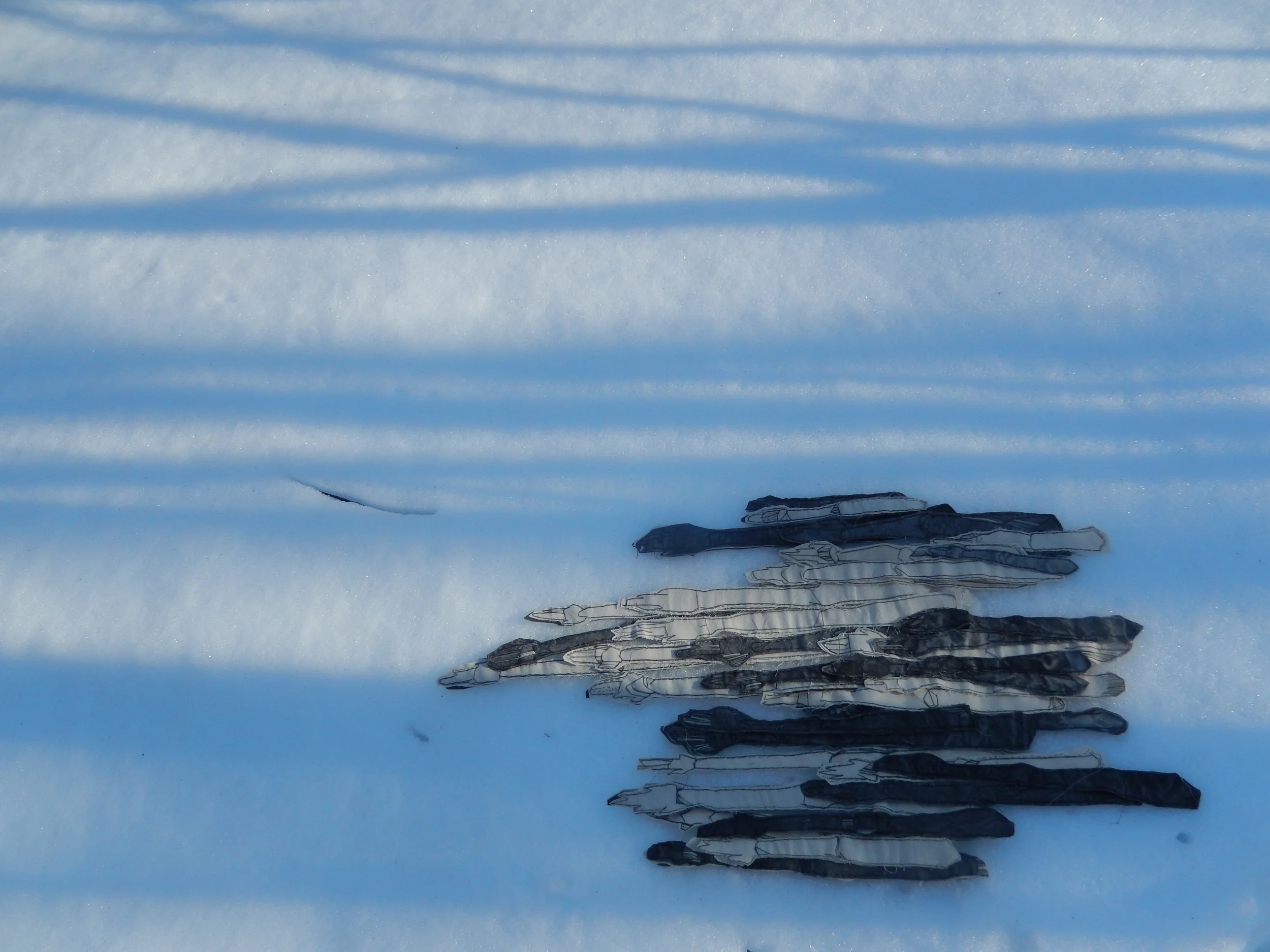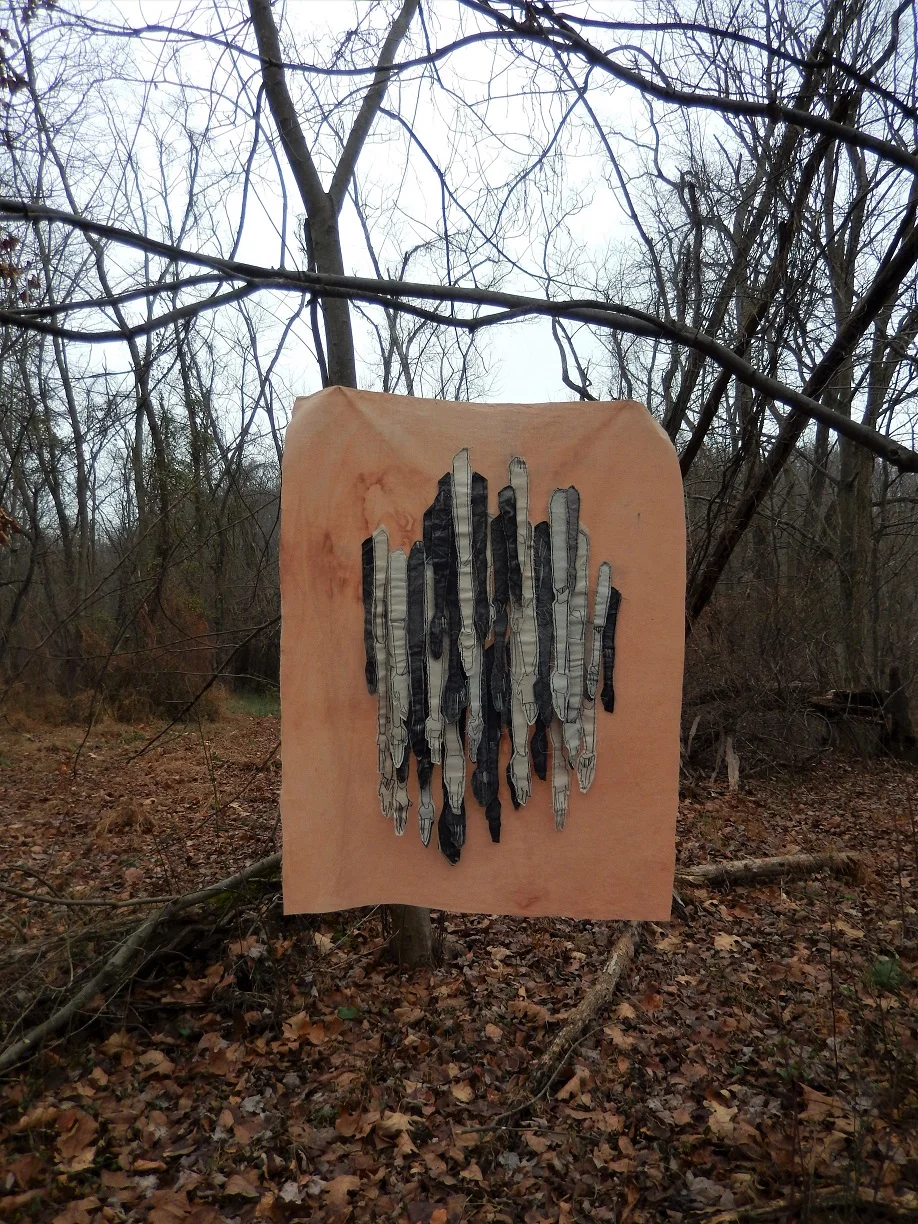2024
Cyanotype solution painted on muslin. Vest is made from cyanotypes of the paintings Portrait of Young Woman with Unicorn by Raphael, Virgin and Unicorn by Domenichino, Lady with a Unicorn by Luca Longhi, and the tapestry The Unicorn Rests in a Garden. The pattern is one my Mom used to make a medieval maid costume for me as a child, which I wore into adulthood. Unicorn is made from cotton stuffed with kapok fiber, sumi ink dyed hooves, with felted milk fiber mane and tale.
Part I: On Memory
I remember when I saw the painting Portrait of Young Woman with Unicorn at the Galleria Borghese in Rome. I was 16, on the cusp of 17. I went with my Grammie, Auntie Margi, and Uncle Joe-my Dad's side of the family. It was a special trip for my Grammie to visit family outside of Naples, in Avellino. We stayed in Sorrento, Rome, and Florence. It was life changing. Over the years I have found myself thinking about that painting. What was it about this painting? For one the memory.
It was my first trip to Europe, and it was my Grammies first time visiting where her family came from. Growing up I did not spend nearly as much time with my Dad's side of the family. My Grammie and Auntie Margi were the first people that represented 'glamour' to me. Here is this beautiful painting of a young woman holding a unicorn, in a gorgeous building, in a romantic city, with these glamorous women, all in one big sensual country. It was pretty potent. Between starting and finishing the vest my Grammie passed away. After her funeral, my Aunt invited family back to her house. She had old pictures out and there were some from Italy. One of which was a snap of my Grammie and I outside the Galleria Borghese with a sign promoting the Raffaello (Raphael) exhibition.
Part II: On Desire
Portrait of Young Woman with Unicorn is believed to have been a portrait commissioned to celebrate a wedding. There are a few different theories as to who the sitter may have been, but the one I'm most drawn to is that of Giulia Farnese, a noblewoman who also became the mistress of Pope Alexander Borgia. Giulia is also believed to have been the model for Longhi's painting, and her Granddaughter, also named Giulia, the model in Domenichino's fresco.
Holding a unicorn showed the sitters purity and chastity, but also their powers of seduction. They 'caught' their prey. By positioning and then photographing myself like the sitter, and countless other loungers, I am exploring these poses that were/are intended to elicit desire in the viewer. In the process attempting to satiate my own desire to be desired. In aligning myself with women (or persons) of antiquity through the present, I am interested in understanding the future of my desires.
I actually found out about Giulia separately from the paintings. The crest of her family is a unicorn. Giulia la bella.


